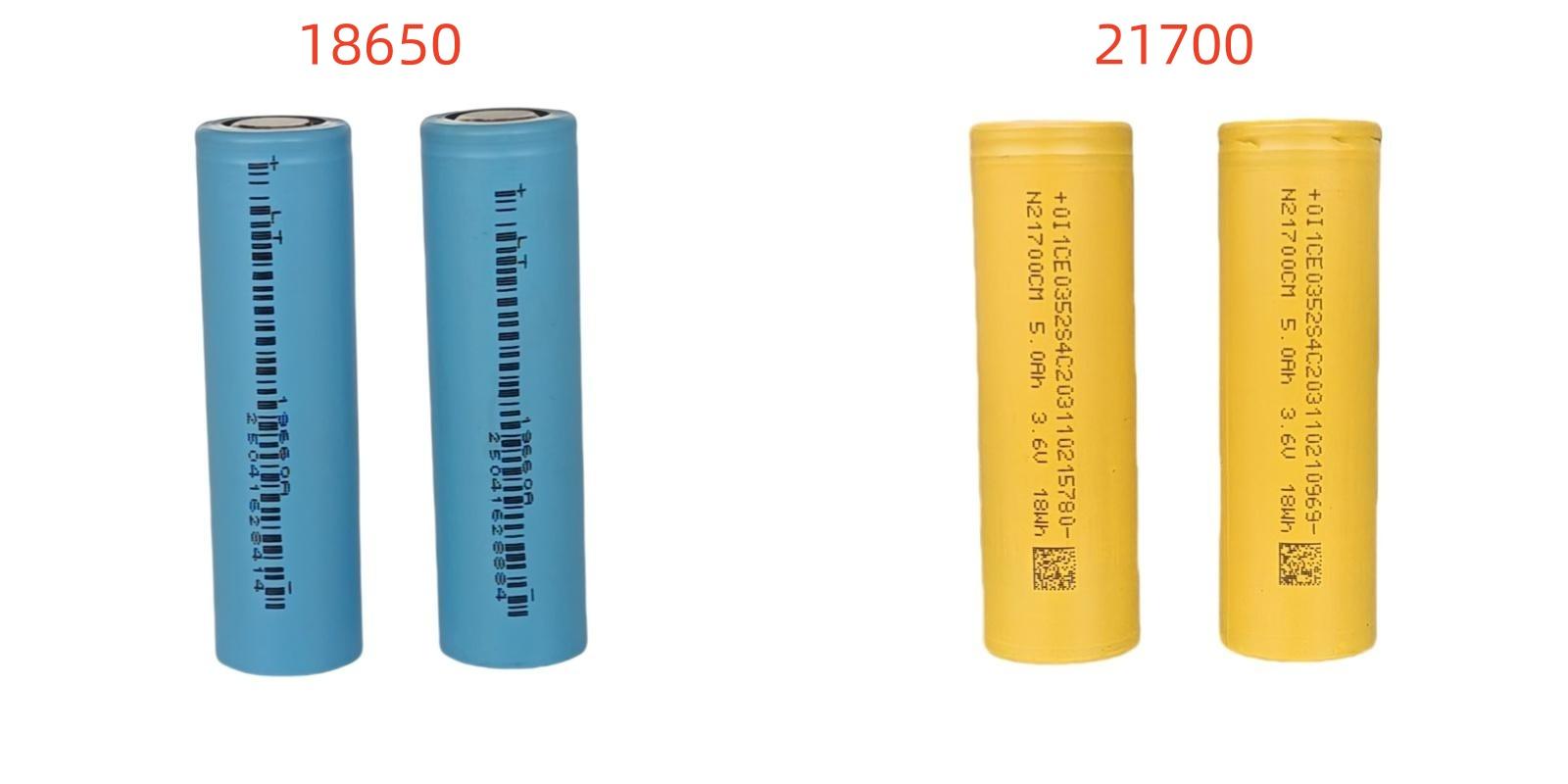
Lithium-ion batteries are widely used in electronic devices due to their high energy density and recyclability. Among the most common cylindrical variants are the 18650 and 21700 batteries. This article examines their key characteristics.
What is it?
An 18650 is a rechargeable lithium-ion battery measuring 18mm in diameter and 65mm in length. Known for compact size and effective heat dissipation, it’s ideal for flashlights, laptops, and electric vehicles.
Advantages:
1. Superior Heat Dissipation: Its shorter internal winding structure enhances thermal management compared to larger cells.
2. Cost-Effective & Accessible: Mature manufacturing ensures ample supply and competitive pricing.
3. Lightweight Design: Compact form factor reduces device weight.
Applications:
- Electric cars/e-bikes
- Portable power banks
- Emergency lighting
- Consumer electronics
What is it?
The 21700 is a rechargeable lithium-ion cell with a 21mm diameter and 70mm length. It offers higher capacity and energy density, making it popular in Tesla vehicles and e-scooters.
Advantages:
1. Higher Capacity: Delivers 35% more capacity (e.g., 3–4.8Ah) than equivalent 18650 cells.
2. Enhanced Energy Density: ~300Wh/kg vs. 18650’s 250Wh/kg—a 20% improvement.
3. Reduced Manufacturing Costs: Fewer cells needed per unit capacity (e.g., 20 vs. 30 cells for 100Ah).
4. Stable Performance: Maintains 18650-level reliability with upgraded capabilities.
Applications:
- Electric vehicles
- High-power flashlights
- Vaping devices
- Consumer electronics
Similarities:
- Shared applications (e-bikes, tools, electronics).
- Steel-cased cylindrical design.
- Low self-discharge rates.
- 500+ recharge cycles.
- Optimal operating temperature: 25°C (77°F).
- High energy density systems.
Differences:
| Feature | 18650 | 21700 |
| Size | 18×65mm | 21×70mm |
| Capacity | 2,200–3,600mAh | 3,300–5,100mAh |
| Weight | Lighter | 40–90% heavier |
| Cost (Protected) | Lower | Higher |
| Power Output | Moderate | Higher (improved cooling) |
Select based on your needs:
- Opt for 21700 if prioritizing runtime and capacity.
- Choose 18650 for lightweight designs or cost-sensitive projects.
1. Avoid False Claims: Reject cells advertising capacities beyond standard ranges (e.g., >3,600mAh for 18650; >5,100mAh for 21700).
2. Compare Protection Costs: Protected batteries (with safety circuits) cost more—suspiciously low prices may indicate counterfeits.
3. Verify Weight: Authentic 21700s weigh >60g; 18650s >42g. Lighter units likely lack quality.
4. Buy Reputable Brands: Source from trusted manufacturers or retailers.
Previous:CORNEX Secures Dual Honors at EESA 2025